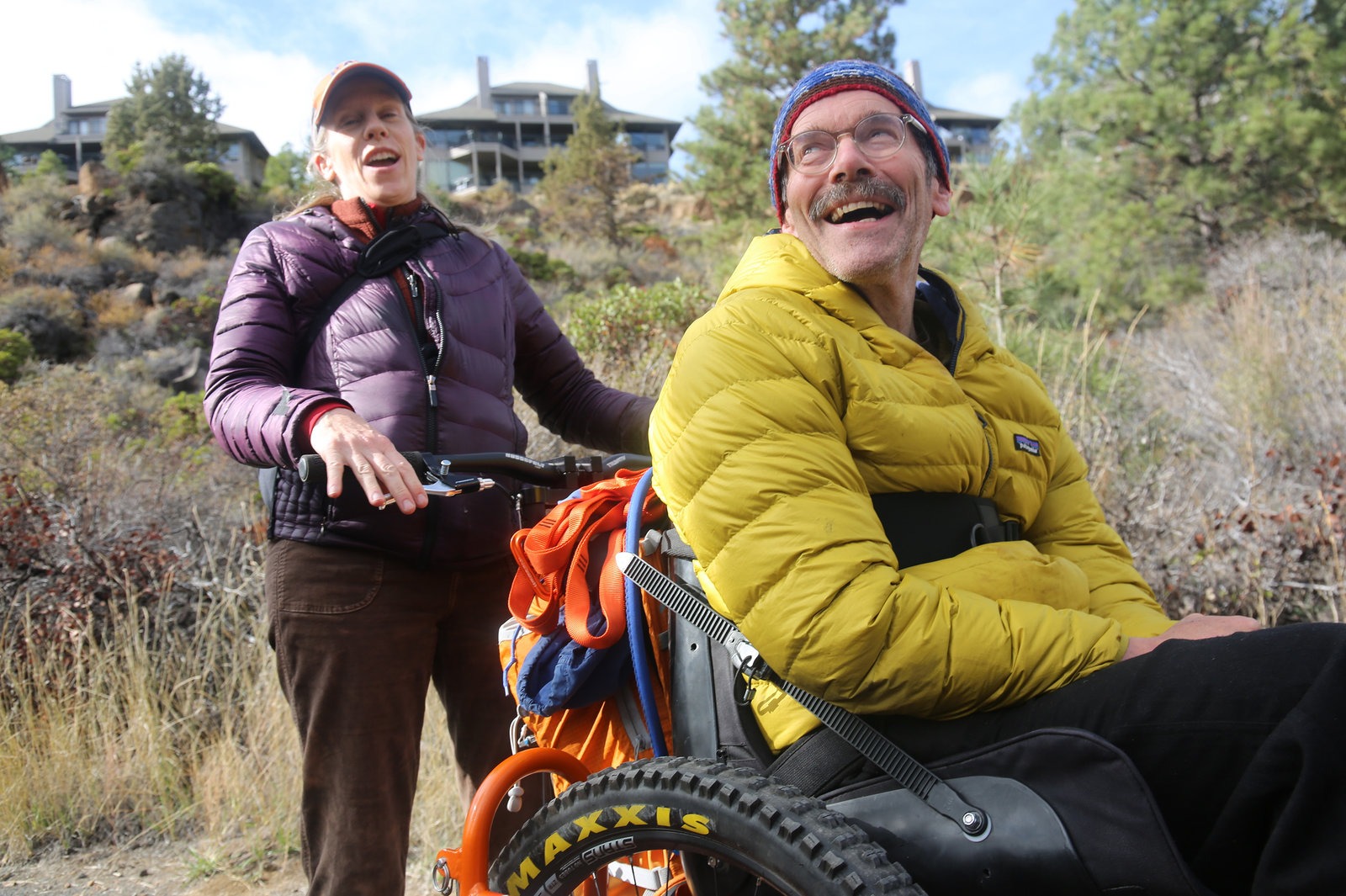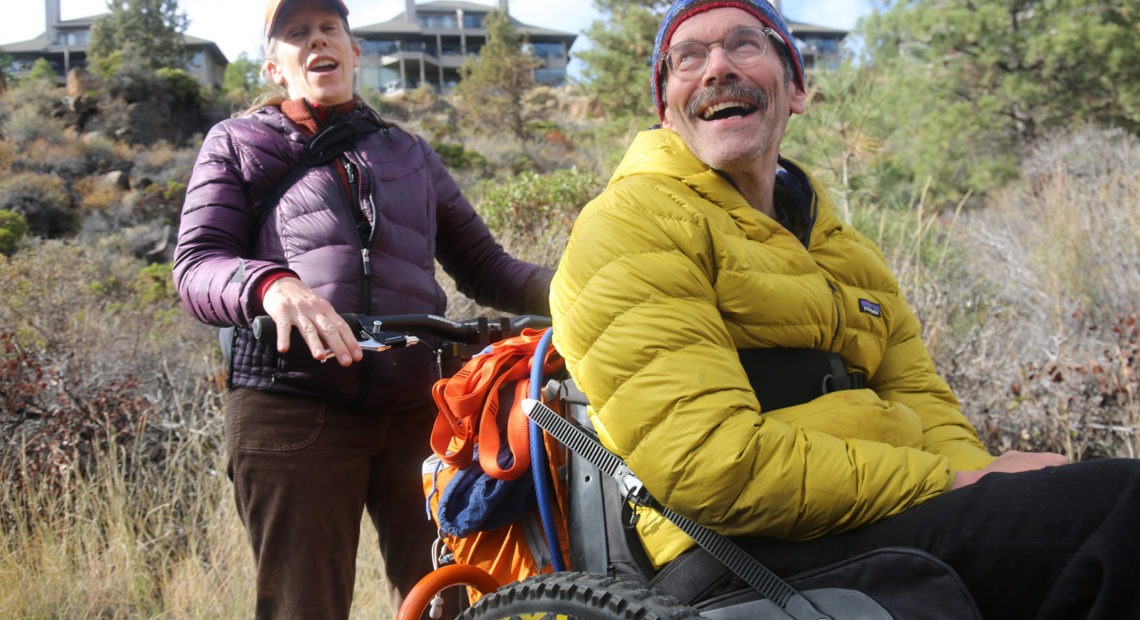
Hiking Wheelchair With Northwest Roots Opens Up Outdoor Lifestyle To People With Disabilities
Listen
Five people moved in tandem down a trail, connected by a wheelchair unlike any other.
This hiking trail, popular with Bend, Ore., families, is a testing ground for inventor Geoff Babb. One miscalculation about how to navigate a tight squeeze of boulders, and he could topple over the edge toward an ice-cold river below. But that’s not what worried Babb, who hasn’t walked since a stroke 14 years ago.
“I don’t feel scared on the trail. I trust these guys to figure it out,” Babb said, adding that he feels more vulnerable crossing a city street.
Driven by a love of the outdoors, he’s invested countless hours in this prototype for an all-terrain wheelchair, creating a new team sport in the process. His AdvenChair resembles a mountain bike. It has handlebars, disc brakes, and a bright orange frame. Its purpose is to help people with serious disabilities access trail systems, because as Babb put it, “we need to celebrate that we’re alive.”
Even though stroke is the leading cause of serious disability in the nation, he found existing all-terrain wheelchairs didn’t suit his needs. A single rider can power the AdvenChair, but like many stroke survivors, Babb’s arms won’t propel him. Instead, he relies on teammates pushing, pulling and steering.
“Even though we have a planned route, you don’t always know what you are going to encounter along the route,” said Amy Kazmier, a friend and “mule.”
The nickname for people who power the chair came after a fateful trip to the Grand Canyon in 2016. An axle broke in the steep terrain, and “we had to take his chair apart and carry it up the hill,” Kazmier recalled.
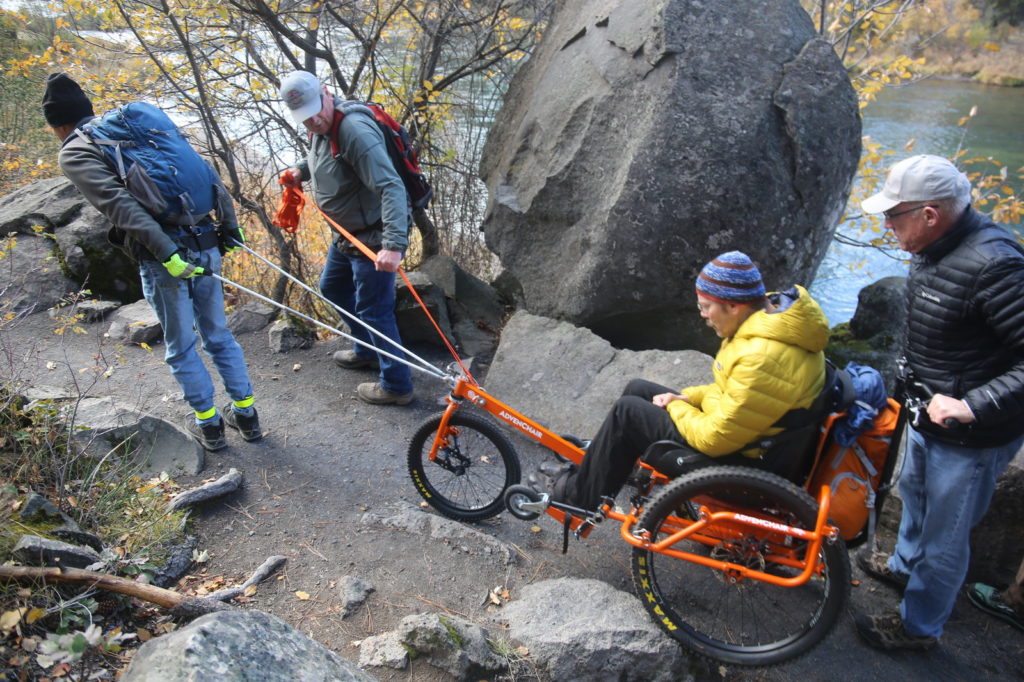
Geoff Babb’s arms won’t propel him, so he gets down the trail with the help of teammates pushing, pulling and steering. CREDIT: Emily Cureton/OPB
After that, product development engineer Jack Arnold looked to the mountain bike industry to overhaul the design.
“The AdvenChair is not based on wheelchair parts. It’s based on mountain bike components, which are more durable than wheelchair parts and less expensive,” Arnold said.
Still, building a prototype has been costly — totaling around $10,000. They’re pitching the idea to tourism companies that lead adventure trips for people with disabilities. This fall the team entered into a “Shark Tank” style competition in Bend, Ore., to attract investors from the outdoor industry.
There was a $5,000 prize on the line, to be decided by an audience vote. Babb had seven minutes to pitch. In the crowd sat one of just a handful of people to ride in the AdvenChair, so far.
Michelle Pearson’s trip last year was her first time on a trail since she became disabled by a stroke in 2015.
“It was just a great day. It felt really good to get out there. And not just your yard, and not just your street, not just driving around your car looking out the windows,” Pearson said.
She hasn’t been on a hike since. She said her own wheelchair broke just going out the front door.
When the results of the competition came in, Pearson erupted with cheers. Babb’s team pulled him up the stairs in the AdvenChair to collect the $5,000 check.
The win was a boost for a project inspired by extreme setbacks. This spring the team has plans to go back to the Grand Canyon, and test the mettle of their latest design.
Copyright 2019 Oregon Public Broadcasting. To see more, visit opb.org
Related Stories:
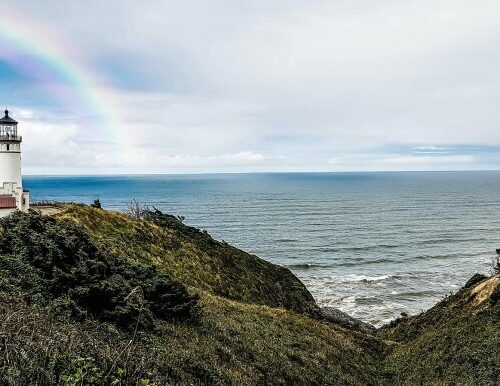
Report To Washington State Parks Commission Shows Barriers For Black Community Outdoors
The Washington State Parks Commission says it wants more Black community members to enjoy the outdoors.
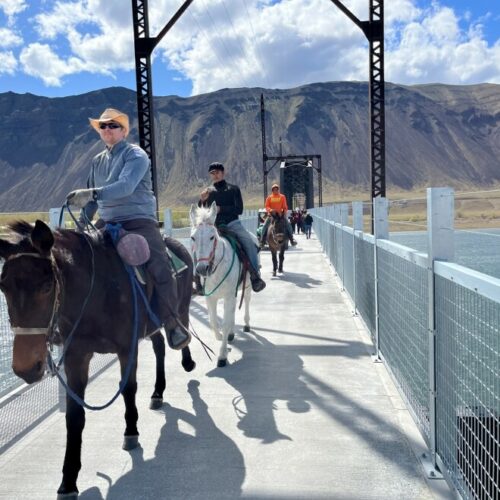
Riding Or Hiking Across Washington State Just Got Easier With New Bridge Over Columbia River
The Columbia River has long divided the two halves of Washington’s cross-state Palouse to Cascades State Park Trail. Now, a rebuilt rail trestle over the river south of Vantage connects the two sides making it easier for cyclists, horse riders and hikers to undertake a spectacular east-west journey.
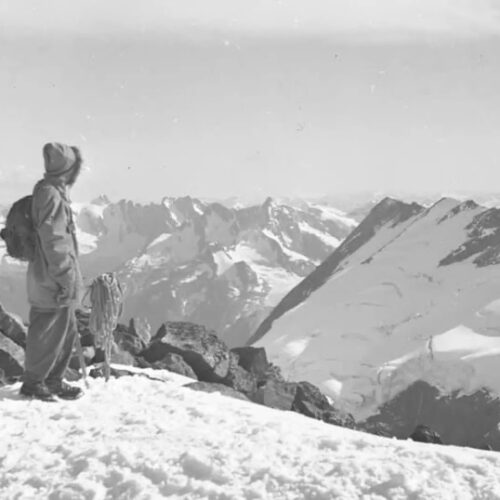
How A Box Of Negatives Led To A Journey Through Northwest Mountaineering History
Reporter Courtney Flatt finds out who is the person in a box of old pictures.

